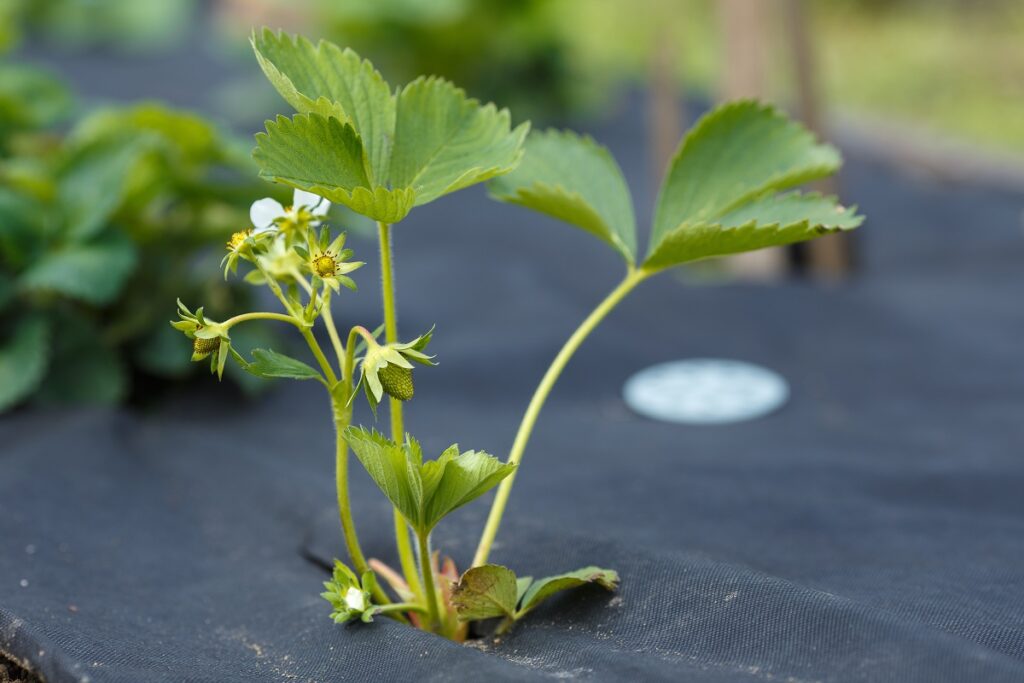
Agrowoven fabric is a special type of fabric made of polypropylene, which is characterised by high strength and resistance to various weather conditions. It is commonly used in horticulture and agriculture to protect plants from weeds, maintain optimum soil moisture and protect against unwanted pests. Non-woven weight is a very important aspect to consider when choosing the right product, as the grammage affects its properties and applications.
One of the main advantages of agro-textile is its ease of use and low cost, making it accessible to a wide range of users. In addition, agro-textile allows a better use of available water resources, which is particularly important during periods of drought. Thanks to the appropriate selection weights of agro-textileThe use of agro fleece can effectively protect plants from extreme temperatures and accelerate the growth process. It is therefore always worth using an agro-fleece to achieve a healthy and abundant crop, whatever the weather conditions.
Before we go into which agro-textile to choose, let’s consider how it differs from agro-textile. Agro-textile and agro-textile are two popular materials used in agriculture and horticulture, although they have slightly different functions and properties. The key difference lies in their structure and permeability to water and air.
Agro-textile is a lightweight, permeable material made from polypropylene or polyester. It is available in different weights, which determine its durability and its ability to let in light, air and water. The main purpose of using an agro-textile is to protect plants from low temperatures, wind, as well as pests and diseases. The material is water permeable, making it possible to water the plants without having to uncover them. In addition, agro-textile is lightweight and easy to use, which makes it popular for frost protection and as a cover against birds or insects.
Agro-textile on the other hand, is made of woven fibres, which makes it more durable and less permeable than agro-textile. It is a material used primarily to inhibit the growth of weeds. Agro-textile blocks light from reaching the soil, effectively preventing the growth of unwanted vegetation. At the same time, the material is permeable to water and air, which maintains the right moisture balance in the soil and allows plant roots to breathe. It is also durable and resistant to mechanical damage, which is why it is often used on garden paths or under stone or bark paving.
Both materials offer thermal protection, although agro-textile is far more effective in protecting against the cold, which is particularly important during early spring frosts or on the colder nights of the season. Agro-textile, on the other hand, is preferred due to its structure where long-term protection against weeds and soil stabilisation is required.
The following is available on the market agro fleece in different weightsand this parameter is selected according to the specific crop and protection needs. The most common variants include light, medium and heavy weights, each with its own unique uses. Which agro-textile fabric should you choose? Below is a small download.
Choosing the right weight of agro-textile is crucial to the success of the crop, so it is worth considering the specifics of the plants and the prevailing weather conditions to achieve the best results.
When choosing the right agro-textile weights, some mistakes can lead to ineffective crop protection and wasted resources. One of the most common mistakes is choosing a weight that is too light for weed control. An agro-textile weight of 17–30 g/m², although excellent for protection against cold and UV radiation, will not provide effective protection against weeds, which can lead to excessive weed growth. For this reason, if weed control is the aim, a heavier 50–80 g/m² agro-textile should be used.
Another mistake is to use an agro-textile that is too heavy to protect young plants. A 90–120 g/m² agro-textile, although very strong and ideal for large agricultural crops, can restrict air and water flow, which will adversely affect the development of young plants. Hence, it is important to carefully consider the specifics of the crop. The final choice of weight should be well adapted to the specific needs of the plants and their environmental requirements. In this way, unnecessary losses can be avoided and the best results can be achieved.
When buying agro fleece, it is worth looking at trusted shops and suppliers that offer a wide range. When browsing online, you can find many reputable garden shops that specialise in selling materials such as agro-textile. It is worth checking the reviews of other users to ensure that the products are of high quality and meet expectations.
It is also a good idea to take advantage of the offers of specialist farm shops, where expert staff will help you choose the right agro-textiles. In this way, mistakes can be avoided when choosing. It is worth paying attention to promotional and seasonal offers, which can reduce the cost of purchase. By carefully choosing the source of your purchase, you can be sure that the agro-textile will fulfil its purpose effectively and serve your crops for a long time.